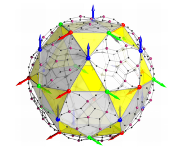Speaker
Description
Shapeable magneto-electronics is the new trends in spintronics due to the growing market of flexible electronic devices. In this context we have deposited perpendicularly magnetized Co(0.7nm)/Pt thin film on flexible substrates like Polyimide film (25 µm thick) and Kapton tapes. We observed that magnetic anisotropy is tunable via variable strain. However the domain shape may or may not change depending on the different strain mechanism.
Next I will discuss on another field of antiferromagnetic (AFM) spintronics. Pure spin current can be generated by the precession of magnetization in a ferromagnet (FM) to the neighboring heavy metal (HM) via spin pumping process. This pure spin current gets converted to a charge current due to high spin orbit coupling (SOC) of the HM which is known as inverse spin Hall effect (ISHE) process. Recently AFM materials having high SOC are found to be good replacement of HM in spin current based study. We have performed the ISHE study of CoFeB (10 nm)/ AFM (d nm) where we considered various AFM such as Mn2Au, IrMn etc. Angle dependent ISHE was performed to disentangle various spin rectification effects.
Further I will show the study on topological insulator (TI)/ferromagnetic Bi2Se3/YIG garnet films. Polarized neutron reflectometry experiments indicate induced magnetic moment in the TI. ISHE experiments are also performed to demonstrate that TIs are potential candidates to replace HM as they also possess high spin-orbit coupling.

